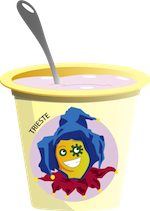Team:Trieste/parts/3
From 2012.igem.org
(Difference between revisions)
| Line 43: | Line 43: | ||
<br/> | <br/> | ||
<center><img src="https://static.igem.org/mediawiki/2012/0/02/TriesteCuminaldehyde.png" width="300px"/></center> | <center><img src="https://static.igem.org/mediawiki/2012/0/02/TriesteCuminaldehyde.png" width="300px"/></center> | ||
| - | < | + | </div> |
| - | + | ||
| - | + | ||
| - | + | ||
| - | + | ||
| - | + | ||
| - | + | ||
<br/> | <br/> | ||
<br/> | <br/> | ||
Revision as of 17:48, 26 October 2012
BBa_K875003
More
Description
This composite produces constitutively the CymR regulator protein, that binds the Cumate Operator repressing the transcription from the promoter.
Assembly
The CymR gene was obtained by synthesis and then was assembled with other BioBricks.
Results
CymR expression was confirmed by Western Blot analysis. Our CymR has a SV5 tag at the C-terminus in order to be detected by an anti-SV5 Ab. Its functionality was confirmed through the repression of T5 Cumate Operator-GFP.
The validation of the repression of the protein CymR on the T5 cumate operator was verified through the creation of a plasmid containing a single copy of CymR and the T5 cumate operator upstream the GFP (I13504). We saw that the expression of the GFP was completely repressed in absence of p-cumate but it was active in presence of p-cumate.

Post European-Jamboree
Cuminaldehyde activation of cumate switchUp to now all our tests were based on p-cumate according to the literature
(Novel, Versatile, and Tightly Regulated Expression System for Escherichia coli Strains Young J. Choi, Lyne Morel, Teffanie Le François Denis Bourque, Lucie Bourget, Denis Groleau, Bernard Massie and Carlos B. Míguez Applied and Environmental Microbiology, Aug. 2010, p. 5058–5066 Vol.76 doi:10.1128/AEM.00413-10)
. But since it is known that the most abundant component in the cumin spice is the cuminaldehyde, we later decided to test also its activity in the regulation of the cumate switch. We confirmed that also the cuminaldehyde was able to activate the cumate switch, although in higher concentrations.
Looking forward
The next step will be the integration of two copies of CymR in the bacterial genome in order to regulate the toxin genes carried by the plasmid.Link to the Registry







 "
"









